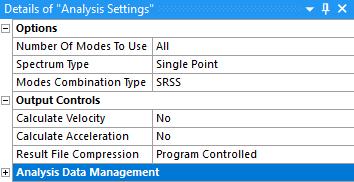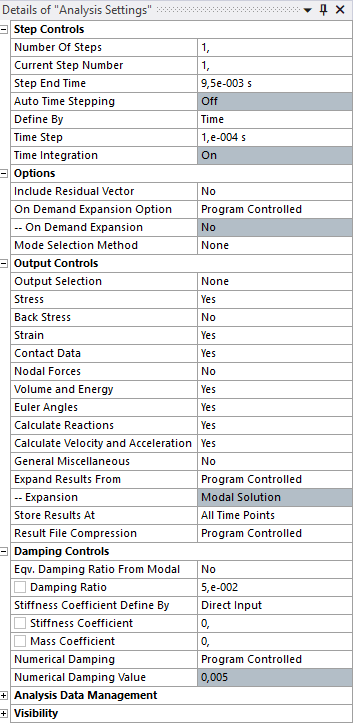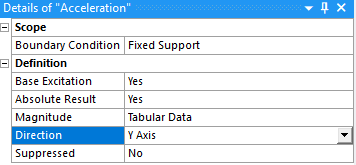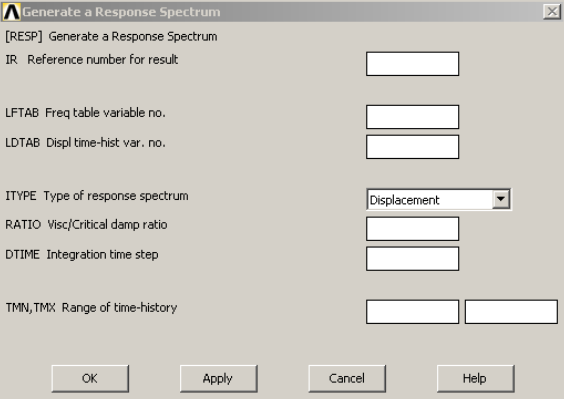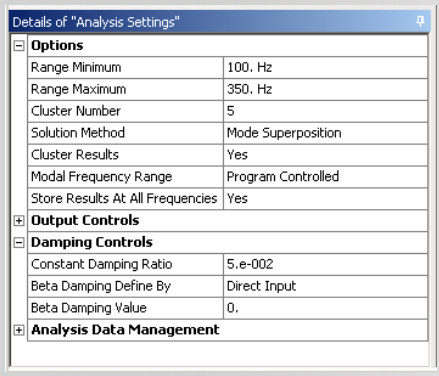-
-
January 9, 2025 at 9:05 am
JLeeft
SubscriberI have a simple aluminium I-beam clamped on one side and free on the other. I am interested in its shock response on a 60g, 10ms half-sine shock. First, I do a response spectrum analysis and i verify that with a transient analysis.
For my shock response, I use the following settings:
And my input looks like this:
The tabular data contains a shock response spectrum corresponding to the half-sine shock.
For the Transient analysis, I use the following settings:
And my input looks like this:
Here, the tabular data contains the time history half-sine shock.
When looking at both results, I get a difference in the max equivalent stress for both analysis. For the Response Spectrum analysis, my max stress is 31.294 MPa. For the Transient Analysis, the max stress is 33.253 MPa. This is a difference of more than 6%. Why is this?
-
January 9, 2025 at 9:37 am
Harshvardhan
Ansys EmployeeHi,
Kindly check out this KM which I think might help you out.
Presentation on shock analysis using response spectrum and transient dynamics | Ansys Knowledge
Regards,
Harshvardhan
Ansys Help
Ansys Learning Forum (Rules & Guidelines) -
January 9, 2025 at 10:45 am
JLeeft
SubscriberSo if I understand it correct, the difference is due to the non-linear effects. But why is my stress in the Transient analysis higher? I would expect non-linear effects to decrease the maximum stress.
-
January 11, 2025 at 1:40 pm
peteroznewman
SubscriberThank you Harshvardhan for the link to the KM.
It seems there are two places to include damping.
(1) When converting a time history into a Response Spectrum, damping can be included in the spectrum using damping RATIO, see slide 11 in Response Spectrum. In this example, that is left blank, but it could have a value such as 0.05.
(2) When defining the Analysis Settings in the Modal part of Response Spectrum Analysis, Constant Damping Ratio is shown on slide 9.
If a non-zero damping RATIO is specified in the creation of the Response Spectrum and damping is also in the Modal analysis, they would both be applied resulting in excessive damping in the Response Spectrum analysis results. Damping should only be included in one place or the other, not both. Is that correct?
-
- You must be logged in to reply to this topic.



-
3387
-
1052
-
1050
-
886
-
852

© 2025 Copyright ANSYS, Inc. All rights reserved.

